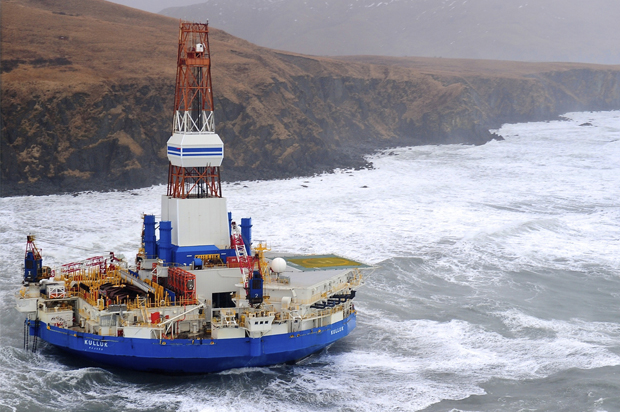Part of the reason why everyone’s so upset about Obama’s decision to let Shell drill in the Arctic — aside from the fact that going to great lengths and taking significant risks for the sake of recovering even more climate-destroying fossil fuels is counterproductive, to say the least — is that the oil giant doesn’t exactly have a stellar track record in the region.
The year was 2012, and all sorts of things went wrong, resulting in the grounding of the Kulluk, Shell’s exploratory offshore rig. And a new report from the National Transportation Safety Board confirms that the whole debacle can be blamed on Shell’s “inadequate assessment of the risk.”
“No single error or mechanical failure led to this accident,” the report found. “Rather, shortcomings in the design of a plan with an insufficient margin of safety allowed the accident to take place.”
Shell, according to the NTSB, knew that it was a bad idea to try and transport the Kulluk through the Gulf of Alaska during a time of year known for severe weather, or, as it the master of the tugboat towing the rig put it in an email quoted in the report: “I believe that this length of tow, at this time of year, in this location, with our current routing guarantees an ***kicking.”
And that’s basically what happened: the tow line snapped, the engines of the Kulluk’s support vessel failed, the Coast Guard was dispatched to rescue the 18 crew members stuck aboard the rig, and the Kulluk crashed on the shore of an uninhabited island. Fortunately, it wasn’t an environmental disaster, but as McKenzie Funk, a journalist who covered the story in-depth, told Salon, the incident illustrates just how the stakes are when it comes to drilling in the Arctic — and how great of a risk there is of something going very wrong, even if a company does everything right.
Shell, uncowed, has a new rig waiting in Seattle to get back out there, and has convinced the Obama administration that it learned from 2012 in formulating its new plan for the Arctic. Some might call its determination to conquer the region an “inadequate assessment of the risk.”

